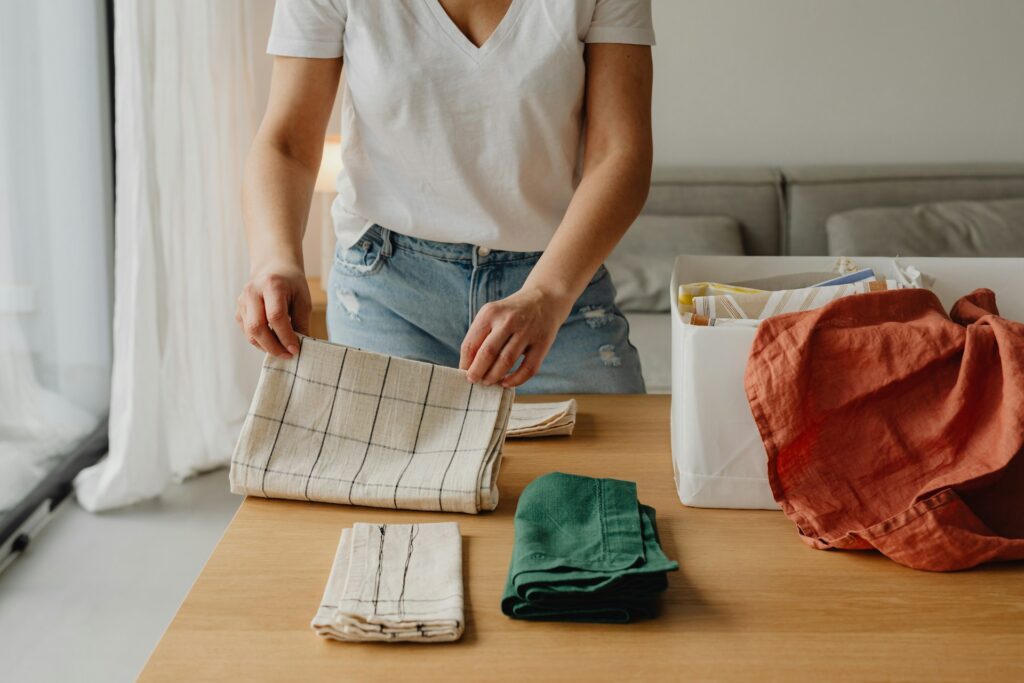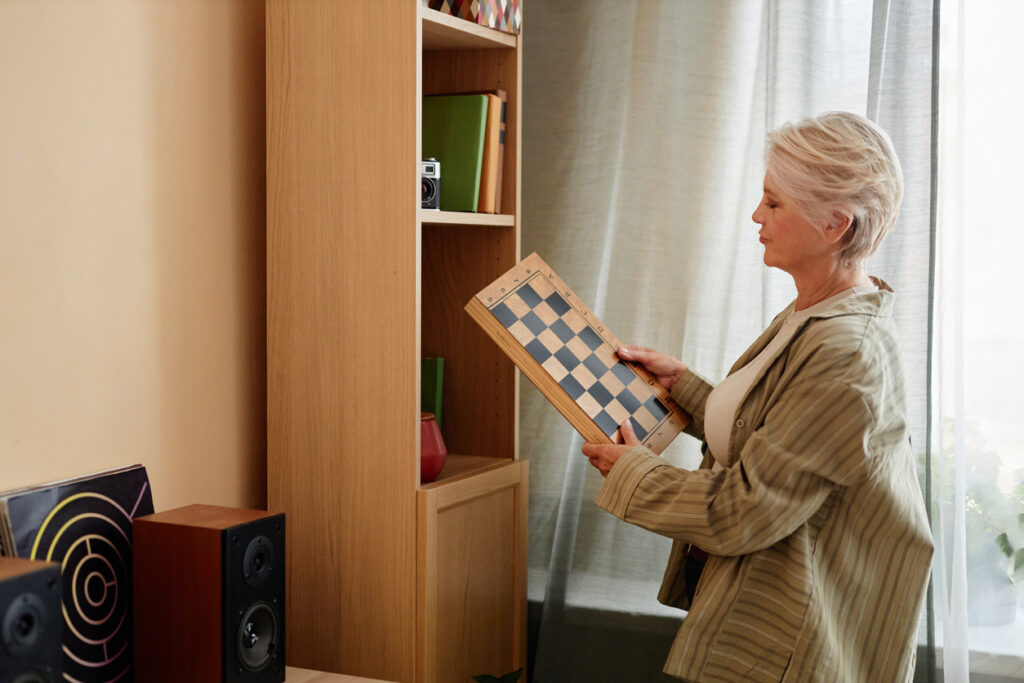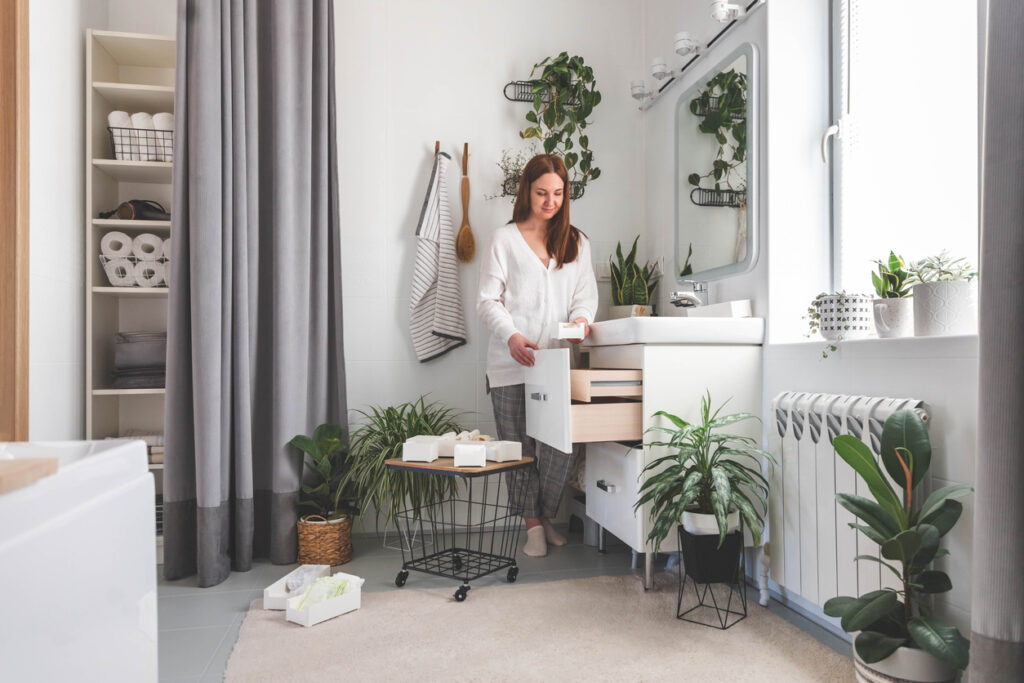Letting go of sentimental things can feel like erasing part of your history, but it doesn’t have to.

Sometimes the best thing you can do for your home and your mindset is to get rid of unnecessary clutter. After all, just because the physical item isn’t with you anymore doesn’t mean the memories won’t be. Here are practical, comforting ways to part with stuff, while still holding on to what really matters.
1. Keep the story, not the stuff.

It’s rarely the item itself we’re attached to—it’s the story it reminds us of. That wristband from a gig, the worn-out jumper from your uni days, or a note from someone you’ve lost all hold emotional value because of the moment they represent.
However, again, those moments don’t disappear if the object does. Try journalling about the memory, taking a voice note, or just telling the story out loud to someone who’ll listen. Capturing the meaning in a way that lives beyond the item gives you permission to release it without feeling like you’re erasing the past.
2. Take a picture of it before letting it go.

Taking a photo of sentimental items can be surprisingly comforting. A picture preserves the visual memory without the physical footprint, and for many people, that’s enough. You still get to look back, reflect, and feel the connection, but you don’t have to carry the weight of the object.
Over time, you’ll realise that seeing the item in your photo album can still spark the same warm feeling. You’ll remember where it came from, what it meant, and why it mattered. The physical space it used to take up can now be filled with things that serve your life in the present.
3. Choose one item to represent the rest.

When you have a group of similar items—like dozens of postcards, childhood drawings, or old clothes—try keeping just one thing that sums it all up. Select the one that truly makes you feel something, the one that still carries weight when you hold it.
This can help you stay connected to that chapter of your life without being overwhelmed by all the clutter. A single keepsake can represent an entire season or story. It’s not about discarding meaning; it’s about distilling it into something more intentional.
4. Make a memory box with limits.

Set aside a small container, maybe a shoebox or something decorative, and make it your designated memory box. The key here is the limit. When the box is full, it forces you to make conscious decisions about what truly belongs inside.
This gives you a clear emotional boundary while still honouring the need to hold onto some pieces of the past. If it fits in the box, and it brings genuine comfort or joy, it stays. If it doesn’t? That’s a gentle signal that you’ve outgrown it, and that’s okay.
5. Turn old items into something new.

If you’re crafty or creative, repurposing sentimental items can help you carry their meaning in a way that feels alive. Old concert tees can become a quilt. Handwritten notes can be framed. Jewellery from someone you loved can be turned into a charm bracelet or keepsake pendant.
This gives the item a second life while honouring the original connection. It also lets you bring those memories into the present in a way that feels practical and expressive, rather than boxed away or hidden in storage.
6. Share the memory with someone else.

Sometimes a memory feels easier to part with when it’s been witnessed. Telling someone about the object, the story behind it, and why it mattered can help solidify it in your heart—because now someone else carries that story with you.
You don’t have to hold it alone anymore. Whether you write it in a message, tell it over tea, or bring it up in conversation, sharing creates connection. With that connection, you’re less likely to feel like you’re losing something when you finally let go.
7. Let yourself grieve the item.

Even if it’s “just stuff,” letting go can still sting. That’s normal. Don’t rush to be practical or emotionally distant about it. You can acknowledge the sadness, take a moment to reflect, and even say a quiet thank you before moving on. Letting go with care is more powerful than throwing something away out of frustration or pressure. That emotional grace helps you release the item and the guilt, allowing the memory to remain soft instead of painful.
8. Keep items that still serve a purpose.

Not everything has to go. If something is both useful and sentimental, it deserves its space in your life. That could be a handmade bowl you still use, a scarf knitted by someone you miss, or a book with notes in the margins.
Sentimental doesn’t always mean “stored away.” Sometimes it means choosing to keep something that still has a role, still adds comfort, or still brings you peace every time you use it. That kind of daily presence can be far more meaningful than hoarding things just in case.
9. Stop keeping things out of guilt.

Some items are only hanging around because you feel bad throwing them away. Gifts you never liked, inherited items you never asked for, or reminders of a painful past can quietly weigh down your space and your spirit.
Guilt isn’t a good enough reason to keep something. You’re allowed to honour the person or occasion in your own way, even if that doesn’t involve keeping the physical object. Letting go doesn’t mean disrespect. It means choosing your peace over silent obligation.
10. Focus on the memory, not the material

It’s worth asking yourself: “What am I actually afraid of losing here?” Nine times out of ten, it’s not the object—it’s the connection. But that connection doesn’t disappear with the item. When you root yourself in the feeling, not the thing, it becomes easier to separate the emotional attachment from the physical form. The memory lives inside you. The object was just one way to access it.
11. Don’t force it—ease into the process.

You don’t have to declutter your past in a single day. If something feels too painful to let go of right now, let it be. Work around it. Come back when you’re ready. The key is to build emotional momentum slowly. Start with things that are less intense, then move toward the items that carry more weight. Trust that the process will get easier the more you do it, and that every step counts, even the small ones.
12. Honour the person or moment in a new way.

If the item reminds you of someone special or a time you loved, think about how else you could celebrate that memory. Could you write about it? Create something inspired by it? Donate something in their name? Objects aren’t the only way to keep something sacred. Ritual, expression, or intentional action can honour the memory just as powerfully—often in ways that feel lighter and more emotionally sustainable.
13. Remind yourself: you’re letting go of the object, not the love.

This is the mindset change that makes all the difference. What you’re saying goodbye to is a physical item—not the person, not the experience, not the connection that made it matter. That stays with you, regardless of what’s in your hands. You don’t need the object to prove the love existed. The fact that you cared, that it mattered, that you remember—that’s the real legacy. Letting go doesn’t take that away. If anything, it makes space to carry it more clearly.


